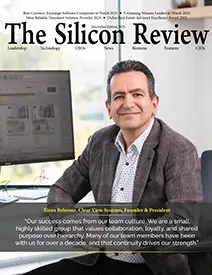>>
Industry>>
Capital Market>>
Temporary Tariff Truce Sparks ...Temporary Tariff Truce Sparks Strategic Recalibration across Global Supply Chains
The Silicon Review
12 May, 2025
In a 90-day economic reprieve, the U.S. and China have agreed to a temporary reduction in tariffs—unlocking short-term relief and long-term recalibration for capital markets and global automation supply networks.
In a move poised to momentarily defuse economic friction, the United States and China have agreed to suspend and reduce selected tariffs for 90 days—a breakthrough expected to ripple across capital markets and industrial automation corridors worldwide. The decision, confirmed by both administrations late Wednesday, signals a strategic pause that will allow businesses to reassess trade flows, cost structures, and sourcing strategies amid a volatile global economy. The temporary tariff rollback is focused on high-impact sectors including semiconductors, automation components, electric vehicles, and precision machinery—areas critical to industrial modernization and digitized manufacturing. For companies operating in the automation space, particularly those reliant on cross-border technology parts and sensors, the agreement provides a narrow but critical window to rebalance inventories, renegotiate supplier terms, and secure price stability on mid-cycle procurement.
Investors responded quickly, with equity markets in both countries posting modest gains. U.S.-listed firms with significant exposure to Chinese supply chains, including automation integrators and robotics manufacturers, saw short-term upward momentum. However, analysts caution that the relief is transactional—not transformational—and underpinned by a tight timeline. What stands out is the unspoken urgency behind this diplomatic shift. With capital markets under pressure from inflation, interest rate uncertainties, and weakening manufacturing indices, this truce gives institutional investors a rare opening to realign capital allocations in automation-heavy portfolios. Equally, industrial firms with global exposure can now reassess reshoring timelines, hybrid logistics models, and pricing forecasts as they navigate this fleeting detente.
While the 90-day window offers relief, it also serves as a countdown for firms to rethink dependencies and deepen resilience across procurement and operational technology platforms. This development is less about diplomacy and more about recalibration—and those who act now will shape the post-tariff playbook.
_2025-12-15_12-44-58.webp)


_2025-11-17_06-38-14.webp)

 (1)_2025-10-21_13-35-14.webp)
